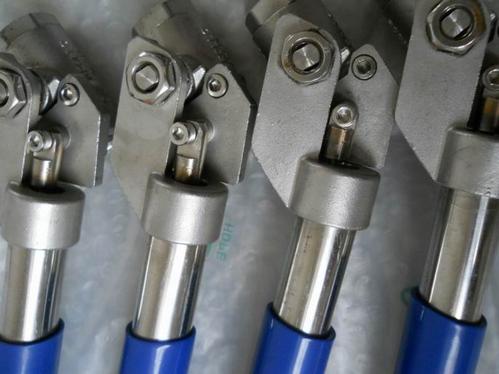What are the Common Connection Types of Valves?

1. Flange connection
This is the most used connection type of valve. According to the shape of the contact surface, it can be divided into the following subtypes:
1) Smooth type: it’s used in valves of pressure that is not high. The processing is rather convenient.
2) Concave and convex type: the operating pressure is rather high. A moderately hard gasket can be used.
3) Tongue and groove type: gasket of large plastic deformation can be used. It’s widely used in corrosive media, with a good sealing effect.
4) Trapezoidal groove type: the oval metal ring is used as a gasket. It’s used in valves with a working pressure equal to or higher than 64 kg per square centimeter, or in high-temperature valves.
5) Lens type: the gasket is lens-shaped, and made of metal. It’s used in valves with a working pressure equal to or higher than 100 kg per square centimeter, or in high-temperature valves.
6) O-shaped ring type: This is a relatively new form of flange connection. Its development is with the emergence of all sorts of rubber O-shaped rings. In terms of sealing effect, it’s more reliable than an ordinary flat gasket.
2. Clamp connection
The valve and the pipes at the two ends are directly clamped together by bolts.
3. Butt welding
The buttwelding ends are prepared by beveling each end of the valve to match a similar level on the pipe. The two ends are then butted to the pipeline.
4. Threaded connection
This is a simple connection method, which is commonly used in small sanitary valves. There’re two subtypes: direct sealing and indirect sealing. Direct sealing: the internal and external threads have a direct sealing effect. In order to ensure there’s no leakage at the connection, lead oil, linen, and PTFE raw material are often used as stuffing. PTFE raw material is increasingly popular. This type of material has very good corrosion resistance and sealing effect. It’s convenient to use and keep. When disassembling, we can remove it as a whole, because it is a layer of non-sticky film, which is far superior to lead oil and linen. Indirect sealing: the tightening force of the thread is passed to the gasket between two surfaces so that the gasket has a sealing effect.
5. Ferrule connection
The connection and sealing mechanism: when the nut is tightened, the ferrule is under pressure, its blade bit into the outer wall of the tube, and the outer cone surface of the ferrule is dovetailed with the inner cone surface of the joint body, so it can reliably prevent leakage.
The advantages of this type of connection:
1) Small size, lightweight, simple structure, easy disassembly.
2) Strong connectivity, a wide range of use, high-pressure resistant(1000 kg per square centimeter), high-temperature resistant(650 degrees Celsius), and impact-resistant.
3) A variety of materials can be used. Suitable for anti-corrosion.
4) The requirement for processing precision is not high. It’s easy to be installed at high altitudes.
6. Groove connection
This is a kind of quick connection method. There only needs to be two bolts. This connection type is suitable for the low-pressure valve that needs frequent disassembly.
7. Internal self-tightening connection
All of the above-mentioned connections use external force to offset the medium pressure to achieve the sealing. The sealing ring of the self-tightening connection is installed in the inner core, forming a certain angle with the surface opposite the medium.
The pressure of the medium is passed to the inner core and then to the sealing ring. At a certain angle on the core, there’re two component forces. One is parallel to the centerline of the valve body and outwardly, and the other is pressed against the inner wall of the valve body. The latter force is the self-tightening force.
The greater the medium pressure, the greater the self-tightening force. Thus, this kind of connection type is suitable for high-pressure valves.
Compared with flange connections, it can save a lot of materials and manpower. But it also needs a certain preload to ensure reliability when the pressure inside the valve is not high. Valves that are made using a self-tightening mechanism are generally high-pressure valves.




